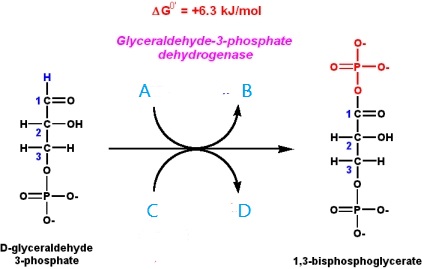Select the correct multiple answer using ONE of the keys A, B, C, D or E as follows:
A. (i), (ii)and (iii) are correct
B. (i) and (iii) are correct
C. (ii) and (iv) are correct
D. only (iv) is correct
E. all are correct
- Which of the following lists enzymes all facilitate the removal or addition of phosphate groups?
(i)phosphoglycerate kinase, enolase, glycerate-3-phosphate dehydrogenase
(ii)aldolase, enolase, triose phosphate isomerase
(iii) phosphofructokinase-1,triose phosphate isomerase, phosphoglycerate mutase
(iv)phosphofructosekinase -1, pyruvate kinase, phosphoglycerate kinase
2.In which reaction is ATP used up?
(i) fructose -6- phosphate ——> fructose -6-bisphosphate
(ii)Phosphoenol pyruvate ——->pyruvate
(iii)glucose ——> glucose -6-phosphate
(iv) dihydroxyacetone phosphate—–> glyceraldehyde -3-phosphate
3 Which reaction of glycolysis are irreversible reactions?
(i) fructose -6- phosphate ——> fructose -6-bisphosphate
(ii)phosphoenol pyruvate ——>pyruvate
(iii) glucose —-> glucose – 6- phosphate
(iv) dihydroxyacetone phosphate—–> glyceraldehyde -3-phosphate
4. For every glucose molecule metabolised, how many molecules of dihydroxyaceton phosphate is produced in glycolysis
(i)2
(ii)4
(iii) 0
(iv) 1
In the reaction above, what do A,B ,C and D represent?
(i)( A) ATP ;( B)- ADP
(ii)( A) NAD+ & Pi; (B) NADH & H+
(iii) (C) NADH2 + Pi ; (D) NADH
(iv) (C) ADP ; (D) ATP

1) D,
2) B
3) A
4) D